What you need to know about planting and caring for gladioli outdoors
Planting gladioli in open ground is not always intended to decorate a garden plot: sometimes you need a luxurious bouquet for some kind of celebration, for example, on September 1. A tiny first grader with three cut flowers can outshine everyone on the line. Flowers are not often given to men. And in vain - gladioli would be an ideal option for a gift. Firstly, they are large, powerful and beautiful, like any representative of the stronger sex. Secondly, the narrow sharp leaves resemble the blades of courageous gladiators in the ancient arena of the amphitheater. Actually, the plant got its name from the Latin word "Gladius" - sword.
Diversity of species and varieties: distinctive features
When you travel to the hard-to-reach regions of Africa, you can come across whole areas with wild gladioli. Many centuries ago, it was from there that they arrived with caravans to the territory of modern Europe. The beginning of growing the plant was not entirely successful: they tried to use their tubers for cooking or as a medicine. Only after a while they decided on gladioli - these marvelous flowers began to be planted on flower beds in spring.
Tip: do not start your first planting with the purchase of whimsical flower varieties. Further caring for capricious specimens can bring disappointment, and only accumulated fatigue will be the result.
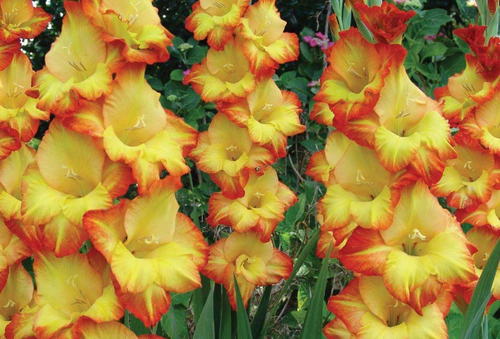
In its native spaces, the height of the plant reaches 2 m, but in our beds, with good care, individual specimens can grow up to 1.5-1.8 m. Powerful wedge-shaped leaves with cutting edges are directed towards the sun. There are about three hundred species of a flower alone, and there are many times more varieties. At the sight of some hybrids, doubts arise - can this completely green gladiolus be grown outdoors? Here are the most popular varieties for breeders to grow:
- Blue butterfly. The flowers are large, white with a subtle bluish tinge. The edges of the petals are wavy, saturated lilac color.
- Ballet star. Differs in a long flowering period. Pink flowers with a slightly orange tint. The petals are pierced with greenish veins.
- Ebony beauty. Inside the flower there is a bright crimson core, the stamens are snow-white. The petals are black with a reddish tint.
- Yellow charm. The unusually large yellow flowers will not fade in the vase even after a few weeks.
The choice of varieties is huge, but an important factor for making a decision should be resistance to changes in average daily temperatures. Abundantly flowering plants in the south of the country, in the Urals may not throw out a peduncle even with good care. For the northern regions, breeders bred special hybrids that tolerate sudden cold snaps well. You need to be prepared for the fact that a warm climate promotes the formation of larger specimens of flowers.

A place for a flower bed: preferences of slender handsome men
Large flowers like this require a lot of open space. Gladioli thrive in areas that have plenty of sunshine most of the day. Even direct rays are not able to harm delicate petals. You cannot plant plants in the shade of trees - you can not wait for flowering and the formation of children in the tubers at all. Instances with later bud formation are less demanding on lighting, while early flowering varieties prefer places with little shade.
Tip: despite their tall stature, gladioli can grow in areas where strong winds often blow. The stems of the plant are strong, but you need to provide them with good support when leaving.
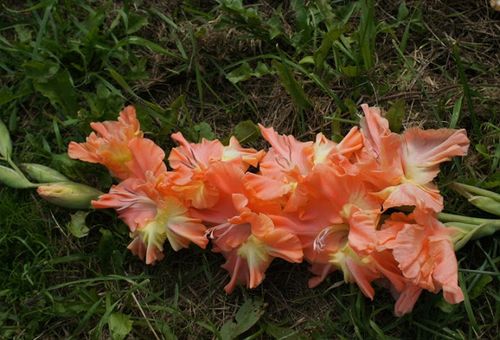
Like all flowers that reproduce tubers, gladioli do not tolerate stagnant moisture. Areas flooded with groundwater, as well as low-lying areas of the garden, are not suitable for planting. When excess moisture accumulates in the area of the tuber, then at the slightest cold snap it will rot, and the plant will die. The soil must meet the following requirements:
- breathable;
- moisture permeable;
- rich in nutrients;
- PH - 4.5-5.5;
Every couple of years, the planting site should be changed; in the new area, larger plants will grow from the same tubers in the spring. You cannot plant flowers in beds where cabbage, tomatoes or zucchini were previously bred. Such soil is depleted, it cannot be saved even by the application of fertilizers and high-quality care. These vegetable crops are often attacked by various pests; their larvae are able to overwinter in the open field. When the plant begins to get sick, you need to remember what grew in this place a year ago and take action.
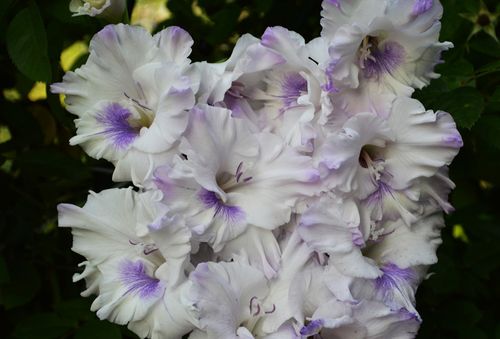
Reproduction and planting: possible difficulties
Gladioli breed by children. In the fall, after digging up the planted tuber, a new one is found under it, as well as many small children. A novice florist needs to be very careful when separating babies and not throw them away, mistaking them for lumps of soil. Tubers of new varieties are purchased in stores, they should look like this:
- With scales of golden or reddish hues.
- The color is even, without gray blotches.
- The outlined roots are elastic, white.
- The bottom is flat, without damage.
Preparation for planting begins in about a month, at the end of March. Overwintered tubers are thoroughly examined in spring - thrips or various rot may appear. Severely damaged specimens are subject to destruction, the rest need treatment. The damaged sides are cut off with a sterile knife and treated with pharmacy brilliant green. Now the nodules are sent to dry.
The boxes are filled with calcined sand or pieces of moss, and tubers are placed on top. It is important not to let them touch. For cultivation, you need to prepare a warm, bright place. Here, young gladioli will grow until the arrival of steady heat in late spring. The land on the site should be well dug up and, if necessary, changes in the composition of the soil should be made. To ensure that follow-up care proceeds as planned:
- dense clay soils improve sand application;
- peat is suitable for diluting sandy soil;
- soil with high acidity is improved by adding wood ash.
The bottom of the hole is sprinkled with river sand. In this way, a drainage layer is created, which is essential for bulbous plants when leaving. On the surface of the soil, a furrow is made with a depth of 10-15 cm and tubers are planted at a distance of 30-40 cm from each other. Small children should be planted in a special bed, the distance between them should not exceed 10-15 cm.
Tip: before boarding, you must process tubers any fungicidal preparation (pickle). Submerging the material in a pink solution of potassium permanganate will save it from the occurrence of putrefactive processes.
Do not immediately fill the furrow with all of the excavated soil. It is added as the first green arrow grows. The timing of its appearance can range from one week to a crescent. After ten days, experts advise when leaving to mulch the surface with peat.
Quality care: the key to proper cultivation
When do gladioli start to water? Flowers need a lot of moisture, so the first abundant watering is carried out after planting in flower beds in the spring. If the soil is prepared correctly, then you can not be afraid of rotting tubers.The timing of irrigation is selected depending on the ambient temperature and soil composition. The best time for water treatments is late evening. You can not add water on top of the plant, the best option would be to moisten the open ground between them.
Tip: every two weeks it is necessary to loosen the soil to a depth of 5-6 cm and get rid of weeds. Fresh air will constantly flow to the tubers, and excess moisture will not linger in the ground.
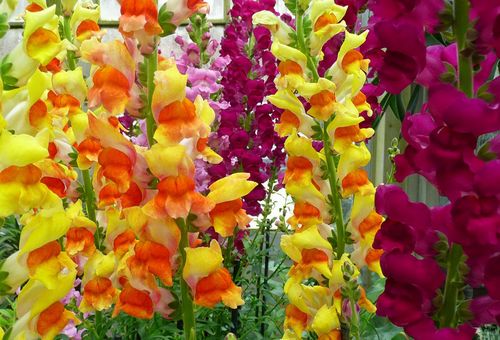
Many gardeners, trying to improve the planting, grow other plants between gladioli. This cannot be done: the stems must receive their portion of sunlight. Remove the flowers as they dry. Every week it is necessary to inspect gladioli in order to detect diseases or pests, and the flower has a lot of them:
- rust;
- botricosis;
- sclerotinosis;
- jaundice;
- thrips;
- mosaic;
- different types of caterpillars.
When plants are attacked by harmful insects, it is necessary to treat the leaves and stems with a preparation with insecticidal activity. The appearance of spots of any localization indicates the occurrence of a fungal or viral infection. Spraying gladiolus with a fungicidal agent will help here. Required processing time: one month from the time of discovery.
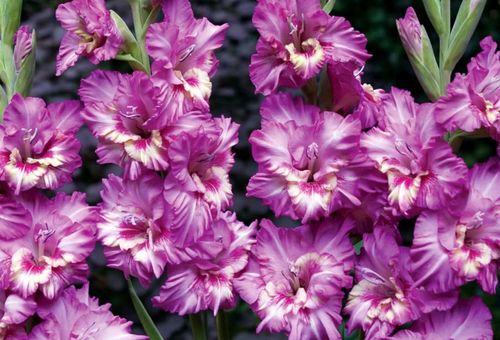
Quality care of such a powerful plant is impossible without top dressing. Gladioli are not suitable for growing on soils flavored with manure. They love it when dissolved bird droppings are introduced into the soil. To do this, 1 liter of droppings is dissolved in 10 liters of water and infused for 4-5 days. After abundant watering, gladioli are fertilized with the resulting infusion. Such dressings can be carried out 2-3 times during the growing season.
It is good to apply mineral fertilizers with a high nitrogen content immediately after planting. And when buds are formed on the peduncle, the plant needs a good portion of top dressing with potassium and phosphorus when leaving. During flowering, you need to apply any complex fertilizers at the root a couple of times a month. Foliar dressing is not practiced when growing gladioli.
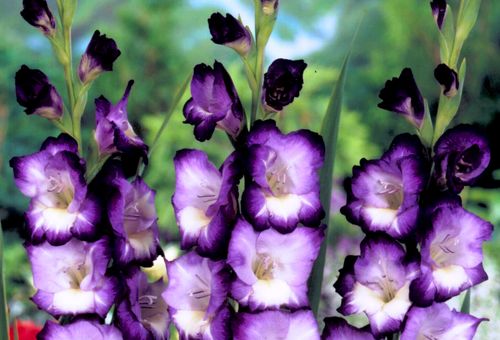
Further care of gladioli in the open field will only bring pleasure. The nodules are dug out of the ground and are sorting - the large ones are folded with large specimens, and the small ones are sent to the small ones. When the crop dries up in the fresh air, it's time to put the gladioli in linen bags and send them for the winter in a refrigerator or dry basement. You can start looking for new varieties and hybrids on the Internet.
True connoisseurs of gladioli can be identified already at the stage of inspection of their site. Tall handsome men are seated in any free spot in the garden. And how their eyes burn at the sight of a new variety of tuber ... Undoubtedly, such flower growers can be called collectors and connoisseurs of beauty.

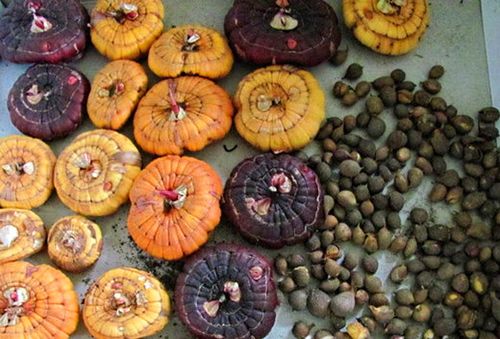

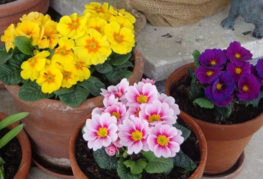

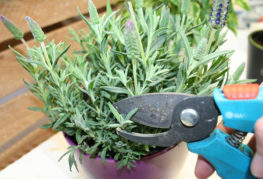

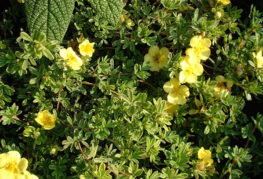
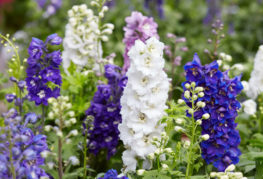
and will be published shortly.